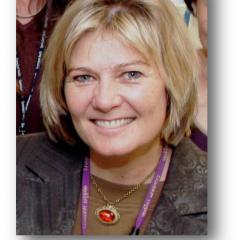Our team is also focused on burns and trauma prevention, with a particular focus on drowning, low speed vehicle run over, cycling, ATV and motorbike injury, equestrian and wheeled recreational devices to name a few. Professor Kimble, Dr Belinda Wallis, Dr Bronwyn Griffin and the team have previously shown that the incidence of paediatric trauma can be decreased by surveillance, collaboration & targeted campaigns. Data is the most powerful tool for legislative change, and since the group’s first prevention paper in 2001 they have published a further 25, each of which has been followed by a targeted prevention campaign.
Working with organisations such as Kidsafe, Queensland Injury Prevention Council and The Queensland Trauma Network (which Prof Kimble holds a position on the Boards), the team will continue to be strong advocates for paediatric burn and trauma prevention.
Outcome: Improved community awareness of cause of burn & other injuries. Decrease in incidence of injuries.
Telemedicine for Paediatric Burns
Investigators: Professor Kimble, Professor Richard Woorton and Associate Professor Anthony Smith
An evidence-based telemedicine service was established for the post-acute care of burns patients. This service is now one of the largest in the world, & recognised internationally as an important model of care. The service has treated over 2000 children & saved patient travel the equivalent distance of travelling from the earth to the moon six times over. This work has been published in a series of seven papers & a book chapter. Outcome: The success of this service has recently facilitated the creation of similar telemedicine clinics for general paediatric surgery & for children with vascular anomalies.
Development and Studying the use of an Electronic Interactive Hand Held Device to Deliver Procedural Preparation and Distraction Therapy to Children undergoing Medical Procedures
Investigators: Professor Kimble, and his team in collaboration with Queensland University of Technology and latterly Diversionary Technologies Ltd
This study enabled the development of a hand held deviceto provide discipline and age specific pre-procedural preparation and distraction for children undergoing painful or distressing procedures. The “Ditto” device has completed nine randomised controlled trials (RCT) including one international multicentre RCT. These have shown that “Ditto” consistently reduces pain and anxiety compared to a standard distraction control (including commercial hand held electronic games) in hospital areas such as Burns, Orthopaedics, Emergency Medicine and Operating Theatre. In 2011 this device went onto the market to benefit children worldwide. The research has gained international recognition and has won numerous awards. Outcome: Three roll-outs of Ditto devices have occurred in Queensland Health, and are now in many children’s hospitals world-wide.






